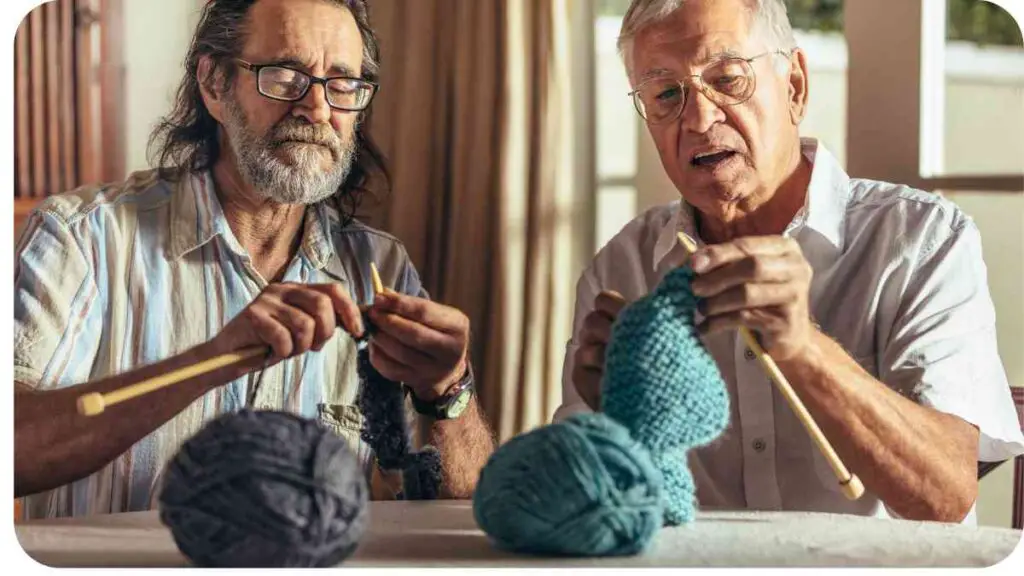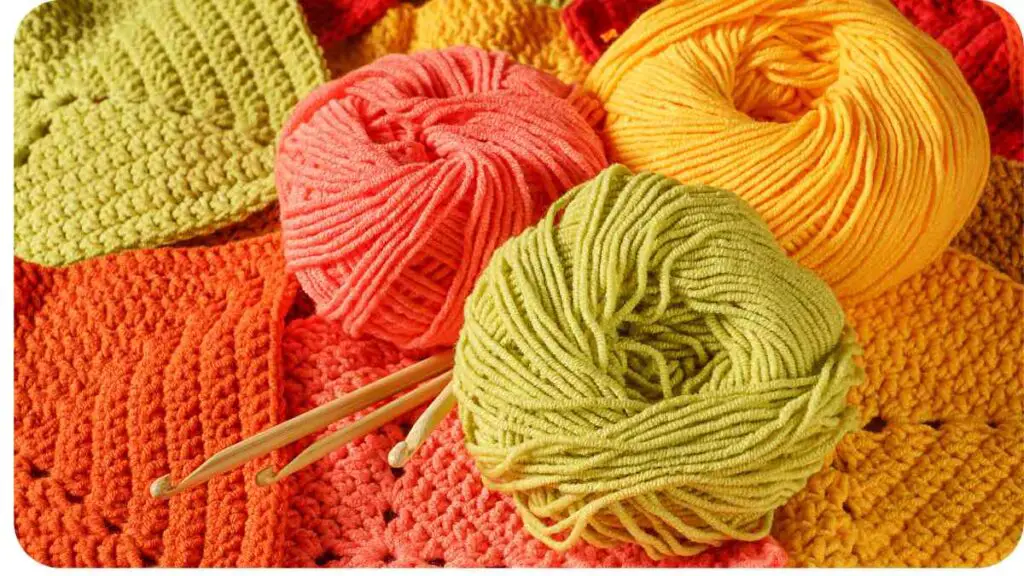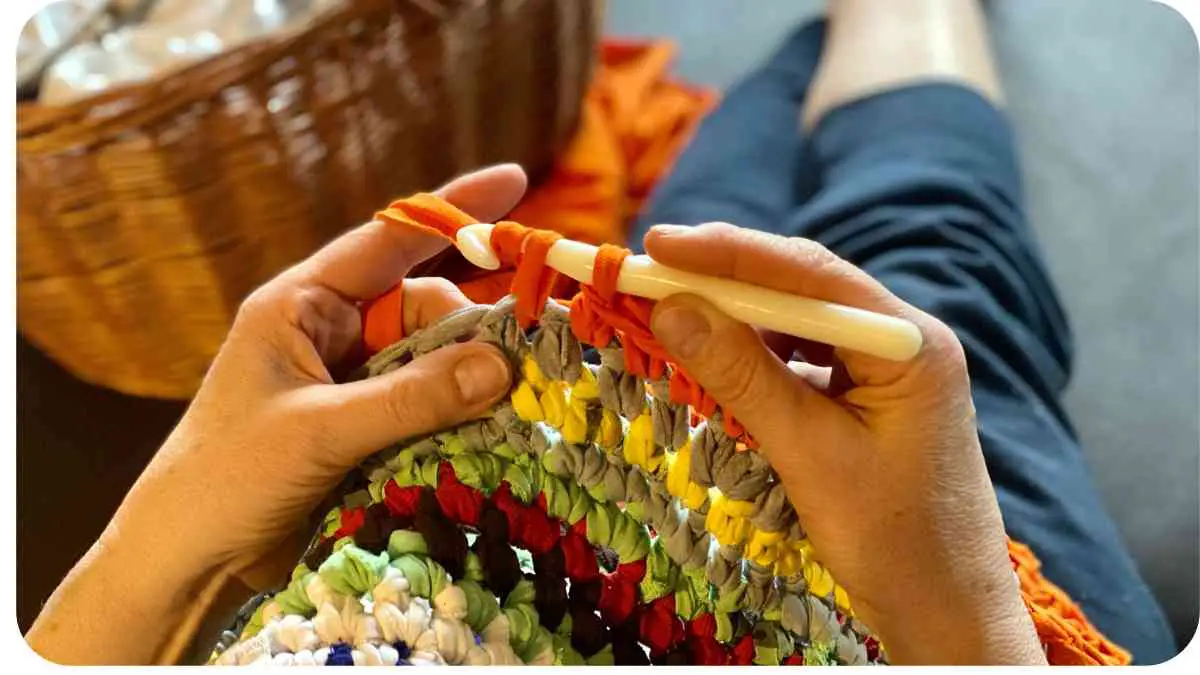Welcome to this quick and easy guide on how to prevent your crochet projects from curling! If you’ve ever completed a beautiful crochet creation, only to find it curling up on itself, this article is here to help. We’ll explore the causes of curling, various techniques to prevent it, and recommended yarns and brands that can enhance your project’s stability.
| Key Takeaways |
| Understand the factors that contribute to curling in crochet projects. |
| Experiment with different stitch patterns, hook sizes, and yarns to find what works best for you. |
| Utilize blocking and adding borders or edgings to minimize curling. |
| Troubleshoot specific curling issues by adjusting techniques and stitches. |
| Enjoy the process and embrace the learning journey of preventing curling in crochet. |
2. Understanding the Curling Phenomenon
What Causes Crochet Projects to Curl?
Crochet projects have a tendency to curl due to the inherent nature of the craft. The opposite sides of crochet fabric behave differently, resulting in curls. Understanding the factors behind this curling can help us address the issue effectively.
“If you’ve ever wondered why your crochet project keeps curling, worry not. Understanding the causes and solutions for this issue is crucial. Check out our comprehensive guide on causes and solutions to fix that curl!”
The Impact of Tension on Curling
Tension plays a vital role in the curling of crochet projects. If your tension is too tight or too loose, it can contribute to the curling effect. Improving your tension control will lead to more uniform and balanced stitches, helping to reduce curling.
Fiber Characteristics and Curling
The type of yarn you choose for your project can also affect the curling. Some fibers have a natural tendency to curl more than others. Understanding the characteristics of different fibers and how they behave can help you select the appropriate yarn for your project.
3. Techniques to Prevent Curling

There are several techniques you can employ to prevent your crochet projects from curling. Let’s explore some of them in detail.
Blocking Your Crochet Project
Blocking is a method that involves shaping and setting your finished crochet project to eliminate any unwanted curling. By wetting or steaming your project and then carefully shaping it to lay flat, you can significantly reduce the curling effect.
“Finished your crochet masterpiece? Discover the endless possibilities and benefits of crocheting with our guide on what to do with crochet creations. Turn your projects into cherished creations!”
Adding a Border or Edging
One effective way to combat curling is to add a border or edging to your crochet project. This additional element creates a stabilizing force around the edges, helping to keep them in place and prevent curling.
Using Different Stitch Patterns
Certain stitch patterns inherently resist curling more than others. By selecting stitch patterns that create a more stable fabric, you can minimize the curling effect. Experimenting with different stitch combinations can provide excellent results.
Changing Hook Sizes
The size of your crochet hook can also influence curling. In some cases, switching to a smaller or larger hook size can help balance the tension and reduce curling. It’s worth experimenting with different hook sizes to find the best fit for your project.
Combining Stitches and Techniques
Employing a combination of stitches and techniques can yield remarkable outcomes in preventing curling. By strategically incorporating specific stitches or techniques into your pattern, you can influence the stability of your crochet fabric and limit curling.
“Calculating the right amount of yarn is key to a successful crochet project. Learn more about understanding quantity and avoid running out mid-project. Keep your crochet journey smooth and uninterrupted!”
4. Recommended Yarns and Brands
To further enhance your crochet project’s stability and reduce curling, selecting the right yarn is essential. Here are some recommended yarns and brands that have been known to work well for projects prone to curling.
Table 1: Yarn Brands and Fiber Properties
| Brand | Fiber Content | Characteristics |
| Brand A | 100% Cotton | Sturdy, minimal elasticity |
| Brand B | Wool-Blend | Soft, good stitch definition, moderate elasticity |
| Brand C | Acrylic | Lightweight, machine-washable, budget-friendly |
| Brand D | Alpaca | Luxurious, warm, natural fibers |
Table 2: Yarns Suitable for Curl-Prone Projects
| Project Type | Recommended Yarns |
| Scarves | Brand A (100% Cotton), Brand B (Wool-Blend) |
| Afghan/Blanket | Brand A (100% Cotton), Brand C (Acrylic), Brand D (Alpaca) |
| Hats | Brand B (Wool-Blend), Brand C (Acrylic) |
| Coasters | Brand A (100% Cotton), Brand C (Acrylic) |
These yarns have the necessary properties to minimize curling while providing durability, softness, and suitable tension. However, experimentation with different yarns is encouraged to find the ideal match for your specific project.
5. Troubleshooting Common Curling Issues

Even after employing various techniques and using the recommended yarns, you may occasionally encounter curling in your projects. Let’s address some common curling issues and provide solutions.
Curling at the Edges
If your project is curling at the edges, try adding a border or edging as discussed earlier. This extra layer will add stability and help prevent curling.
Curling in the Middle
If you notice curling in the middle of your crochet project, blocking can be a useful solution. Wet or steam the fabric, reshape it, and lay it flat to dry. This should help eliminate any unwanted curling issues.
Curling in Specific Stitches or Rows
Certain stitches or rows may be more prone to curling. In this case, you can experiment with alternative stitches or techniques that provide more stability. Referring to stitch guides or seeking advice from experienced crocheters can be beneficial.
Curling Despite Trying Various Techniques
If curling persists despite your best efforts, consider trying a combination of techniques. For example, you can combine blocking with a border and adjust the tension to find a solution that works for your project.
6. Personal Anecdotes and Tips
As an experienced crochet enthusiast, I’ve encountered my fair share of curling projects. Allow me to share some personal anecdotes and tips that may resonate with you and help in your own crochet endeavors.
Finding the Right Tension
One of the most important aspects of preventing curling is finding the right tension. Through trial and error, I discovered that slightly looser tension for curl-prone projects can yield better results. Pay attention to your stitches and adjust your tension accordingly.
The Difference a Border Can Make
Adding a border to my crochet projects has become an essential step for me. Not only does it enhance the overall appearance, but it also provides stability and helps prevent curling. Consider experimenting with different border designs to add that perfect finishing touch.
Experimenting with Stitch Patterns
Don’t be afraid to explore different stitch patterns. Some stitches inherently produce more stable fabrics, minimizing the chances of curling. Incorporate different patterns into your projects and observe the results—this can be an exciting and creative way to address the issue.
Exploring Hook Sizes and Their Effects
Changing hook sizes can have a significant impact on curling. If you’re experiencing persistent curling, try using a larger or smaller hook to adjust the tension and balance the fabric. It might just be the solution you need.
7. Conclusion
In conclusion, curling is a common challenge faced by crochet enthusiasts, but it can be successfully addressed with the right techniques and yarn choices. By understanding the causes of curling, utilizing blocking and edging methods, experimenting with stitch patterns and hook sizes, selecting suitable yarns, and troubleshooting common issues, you can achieve flat and beautiful crochet projects.
Remember, practice and experience will be your best allies in becoming proficient at preventing curling. Embrace the journey, enjoy the process, and don’t be discouraged by occasional setbacks. Happy crocheting!
Further Reading
Here are some additional resources that delve deeper into the topic of preventing curling in crochet projects:
- Tunisian Crochet: Stop the Curling: This informative article by Crochet Kim provides insights and techniques specifically for combating curling in Tunisian crochet projects.
- 5 Ways to Stop Your Crochet Curling: Cosy Rosie UK shares five effective methods to prevent curling and create flat crochet projects.
- 6 Reasons Crochet Edges Curl & How to Prevent: Learn about the various reasons why crochet edges curl and discover practical strategies to prevent this issue, as provided by Sew Homey.
FAQs
Here are some frequently asked questions about preventing curling in crochet projects:
Q: Why do crochet projects curl?
A: Crochet projects tend to curl due to the characteristics of the craft, including inherent tension imbalances between the sides of the fabric.
Q: Can changing my yarn choice help with curling?
A: Yes, different yarns have different properties that can affect curling. Experimenting with yarns that provide more stability, like cotton or a wool blend, can help minimize curling.
Q: How does blocking help prevent curling?
A: Blocking involves wetting or steaming your finished crochet project and carefully reshaping it to lay flat. This process helps relax the stitches and reduces curling.
Q: Will adding a border prevent curling in all cases?
A: Adding a border or edging can provide stability and minimize curling in many cases. However, it might not completely eliminate curling if the tension or stitch pattern is the primary cause.
Q: Should I always use the recommended hook size to prevent curling?
A: While the recommended hook size can provide a good starting point, it’s not a one-size-fits-all solution. Experimenting with different hook sizes may be necessary to find the best tension for your specific project and minimize curling.

My name is Hellen James, and I’m a crochet and knitting expert. I’ve been crocheting since I was just a kid, but I started taking it seriously when I realized that it was a great way to de-stress and relax. Now that I have kids of my own, I love teaching them how to do it too!

